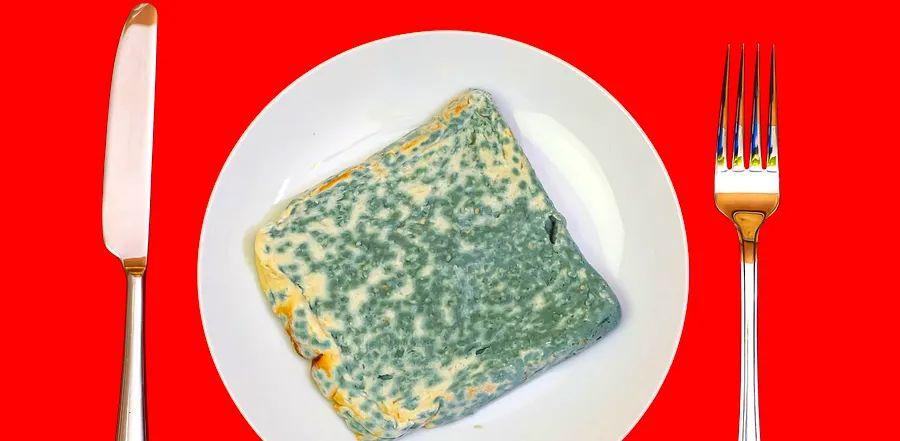What Are the Consequences of Eating Mold?

When clearing out your fridge to make space for fresh groceries, you often toss out unopened packaged items and leftovers that appear off, such as those with discoloration, wilting, or even fuzzy mold patches in shades of green, orange, or gray.
Certain molds, like those found on blue cheeses, brie, and Camembert, are perfectly safe to eat.
But what if you accidentally bite into food that has visible mold? Should you worry? Let’s explore what happens when you eat mold and whether any action is needed.
What Exactly Is Mold?
Molds are thread-like organisms that resemble delicate mushrooms, with spore clusters at the top of the stalk. Although they are usually invisible to the naked eye, they become visible when large numbers of mold cells gather and grow together.
Molds are naturally found in the environment. Their spores can travel through air, water, or via insects, and they thrive by using various hosts, including soil, plants, animals, and humans for growth and survival.
What Triggers Mold Growth on Food?
Mold spores, much like dandelion seeds, can land on food when it's exposed to air.
The growth of mold on food is also influenced by factors like the food's moisture content, airflow, how long it's stored, and the conditions under which it's kept.
Foods with high moisture levels, combined with warm temperatures and high humidity, create the perfect conditions for mold to thrive. These factors encourage mold cells to multiply, resulting in visible mold growth on the surface of the food.
Certain molds can grow without producing visible spores. Instead, they release mycotoxins—harmful toxins that can make you ill.

What Happens If You Consume Moldy Food?
Consuming moldy food can lead to symptoms such as nausea, vomiting, diarrhea, and stomach cramps due to the presence of mycotoxins. Additionally, some molds can trigger allergic reactions, including itching, rashes, stuffy nose, sneezing, and a runny nose.
Don't worry if you've accidentally eaten a small amount of moldy food. Most likely, you'll be okay.
If unpleasant symptoms persist, such as diarrhea lasting more than three days, difficulty keeping fluids down due to ongoing vomiting, or if you notice blood in your stool, it’s important to consult a doctor.
The CDC advises seeking medical attention immediately if you have a weakened immune system, are pregnant, or have other underlying health conditions, as these symptoms could pose additional risks.
Is It Safe to Cut Mold Off Food?
If you've spotted mold on food, it's generally unsafe to eat. What you see on the surface are just the spores, and it’s impossible to determine how deep the mold has spread without examining it under a microscope.
You might think you can salvage the food by simply cutting away the moldy parts, but you should reconsider before doing so.
Mold on the surface of food, especially on porous items like bread or soft fruits such as tomatoes and peaches, could be accompanied by hidden networks of roots or 'spider webs' underneath. The mold can penetrate deep into these foods, making it nearly impossible to remove all traces of it.
If you're uncertain, refer to the USDA's general guidelines on when to discard moldy food. While the guide suggests cutting away at least an inch around and below the mold for certain foods like hard cheeses or firm vegetables, it's impossible to know the full extent of mold growth, especially when mycotoxins could have spread.
Ultimately, trust your own judgment to assess whether the food is safe to eat. Take note of the appearance of the food and the mold, including its size, color, and how long the food has been stored. If in doubt, seal the contaminated food in a bag and dispose of it.

1

2

3

4

5
Evaluation :
5/5